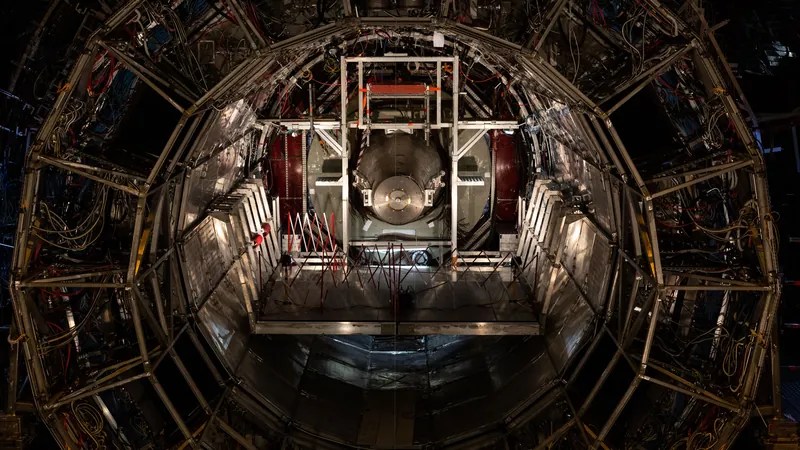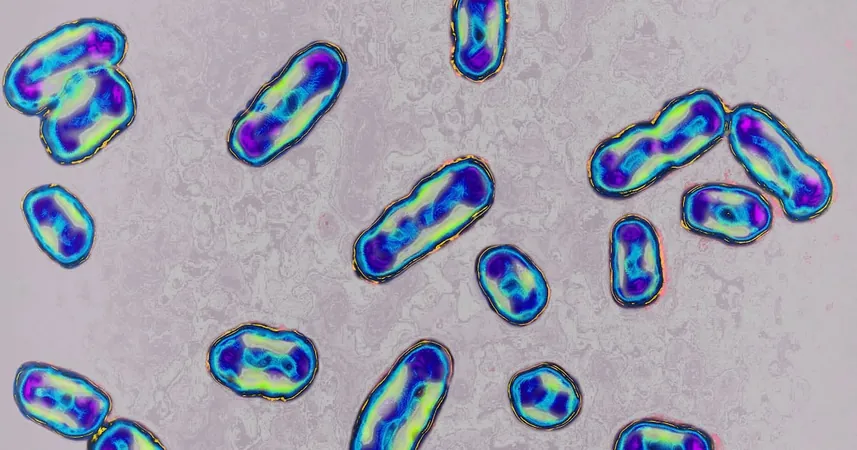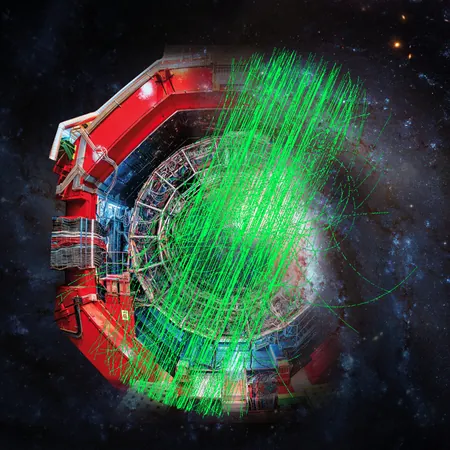
Incredible Breakthrough: Scientists at CERN Transform Lead into Gold, Only to Obliterate It Instantly!
2025-05-09
Author: Jacques
For centuries, medieval alchemists dreamt of turning lead into gold, a legendary pursuit known as chrysopoeia. Now, thanks to modern science, that dream has taken a stunning turn at the world's largest particle accelerator.
Researchers at CERN's Large Hadron Collider (LHC), located near Geneva, have announced a groundbreaking discovery: during its latest run between 2015 and 2018, they generated a staggering 86 billion gold nuclei by smashing lead atoms together at a mind-blowing speed of 99.999993% the speed of light.
Although the result yielded just a minuscule quantity of gold—equivalent to a mere 29 trillionths of a gram—this fleeting creation met an immediate end as it collided with the beam pipe and disintegrated in a fraction of a second. Remarkably, even this brief existence registered in the detectors of ALICE (A Large Ion Collider Experiment).
Marco van Leeuwen, ALICE's spokesperson, expressed excitement, stating, "It's impressive to witness how our detectors handle high-energy collisions that generate thousands of particles while also capturing elusive events that produce just a few, shedding light on rare processes of nuclear transmutation."
Drawing from the wisdom of ancient philosophers like Aristotle, alchemists once believed that the similar densities of lead and gold indicated that lead was merely 'sick' and needed to be transformed into gold. While incorrect, they were onto something: the two metals are neighbors on the periodic table, with gold possessing only three fewer protons than lead—79 compared to lead's 82.
This intriguing proximity means that powerful particle accelerators like the LHC only need to strip three protons (along with some neutrons) from lead to create gold. In contrast, removing one or two protons yields thallium and mercury.
The research team employed the LHC's advanced Zero Degree Calorimeters (ZDCs), which are crucial for detecting the protons and neutrons resulting from countless particle interactions within the collider every second. The analysis revealed that, while gold is produced less frequently than its counterparts thallium or mercury, the third run of the LHC is generating gold nuclei at a remarkable rate of approximately 89,000 per second—almost double that from the previous run, thanks to increased energy levels.
Uliana Dmitrieva, a physicist involved with the ALICE collaboration, highlighted the significance of this achievement: "This marks the first time we have systematically detected and analyzed the signature of gold production experimentally at the LHC." This discovery not only dazzles with its alchemical allure but also opens up new avenues in the field of particle physics.









 Brasil (PT)
Brasil (PT)
 Canada (EN)
Canada (EN)
 Chile (ES)
Chile (ES)
 Česko (CS)
Česko (CS)
 대한민국 (KO)
대한민국 (KO)
 España (ES)
España (ES)
 France (FR)
France (FR)
 Hong Kong (EN)
Hong Kong (EN)
 Italia (IT)
Italia (IT)
 日本 (JA)
日本 (JA)
 Magyarország (HU)
Magyarország (HU)
 Norge (NO)
Norge (NO)
 Polska (PL)
Polska (PL)
 Schweiz (DE)
Schweiz (DE)
 Singapore (EN)
Singapore (EN)
 Sverige (SV)
Sverige (SV)
 Suomi (FI)
Suomi (FI)
 Türkiye (TR)
Türkiye (TR)
 الإمارات العربية المتحدة (AR)
الإمارات العربية المتحدة (AR)